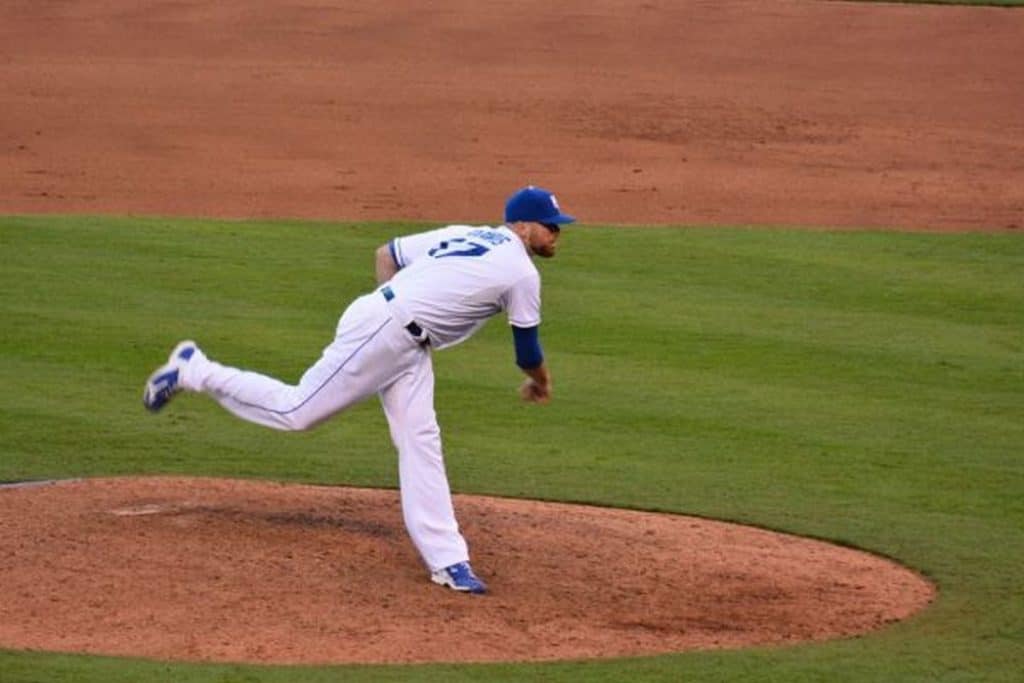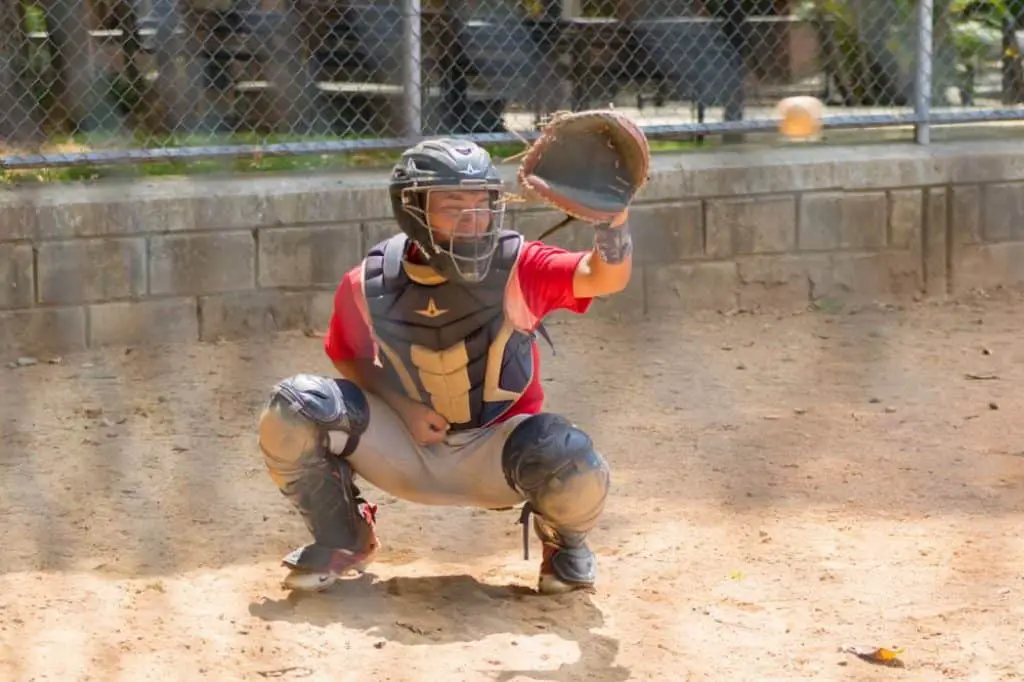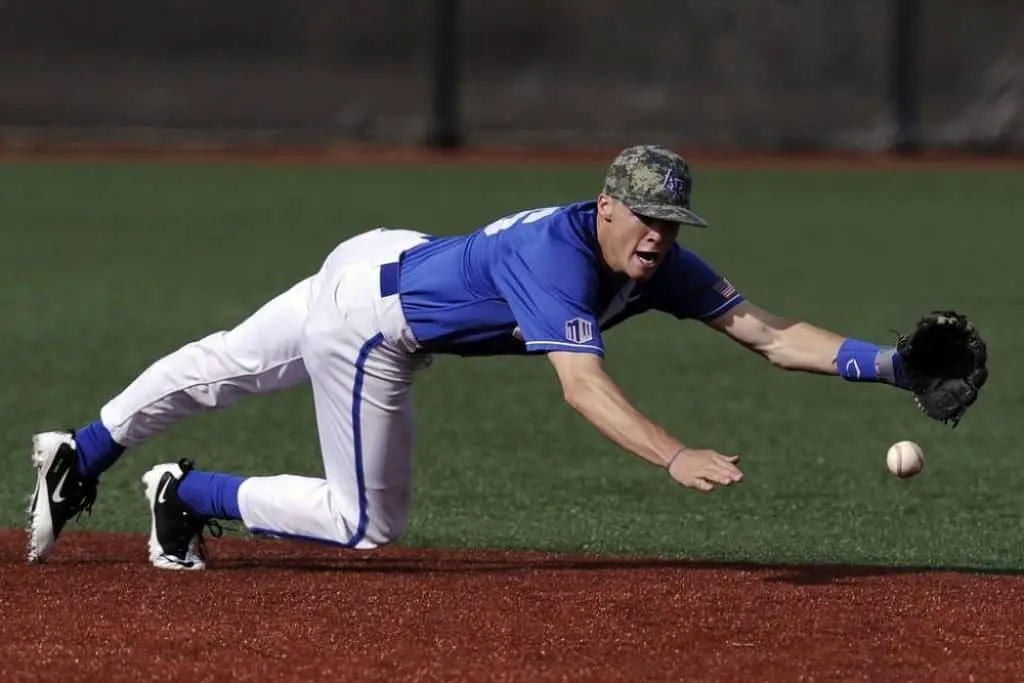Baseball Positions Ranked by Difficulty
Each position in baseball requires specific skills, certain aspects of athletic ability, and, often, a great knowledge of the game and a high baseball IQ.
All these factors differ from one position to another, so it’s almost impossible to quantify how difficult each of them is.
However, that doesn’t stop fans, journalists, and players themselves from engaging in endless debates on which position is the toughest to play even though comparing different spots on the field is rather tricky.
Still, these discussions are usually a lot of fun and great thought exercises that can contribute to a better understanding of the game.
Plus, there are some positions that are undeniably more demanding than others.
So, most lists of baseball positions ranked by difficulty are pretty similar and look like the one detailed below.
Table of Contents
Pitcher

Everything in baseball revolves around the pitcher and it’s the position most important to the team’s success.
While their job is mostly straightforward, to deliver pitches that will prevent the other team from scoring, pitchers dictate the pace and greatly influence the outcome of the entire game.
This means that playing the pitcher involves an enormous amount of pressure on every play, a mistake by a pitcher is commonly more costly than a mistake by any other player on the field.
Besides mental pressure, playing a pitcher also comes with a great physical toll, especially for starting pitchers.
They commonly play five or more innings and are involved in every play during their time on the field.
This puts a lot of strain on their bodies, particularly elbows and shoulders.
In addition, pitchers probably invest more effort into practice than anyone else and spend the most time perfecting their craft.
Catcher

Besides pitchers, no other position is more involved in a game than the catcher.
For many, this is the most difficult position, mainly because it’s extremely physically demanding and highly stressful.
Catchers commonly take part in every play of every inning of every game.
Plus, they spend most of the game moving in and out of the squatting position which is very hard on legs and knees, particularly since catchers do it all while wearing the heaviest protective equipment of any position.
In addition to the mental and physical demands of the position, catchers must have a solid arm and a high baseball IQ.
A supreme understanding of the game is essential, as they practically act as the managers on the field.
They’re usually in charge of play calling which means that they have to know the strengths and weaknesses of every opposing batter, as well as their own pitchers.
Shortstop

Shortstop is commonly the best athlete on the field and the one with the most diverse set of skills. They see plenty of action in every game and cover more areas on the field than any other player.
So, they have to be fast, agile, versatile and have a great arm on top of all this.
Furthermore, as they occupy the central position on the field, between the second and third base, the shortstop effectively acts as the anchor of the infield and many plays will require their assistance.
That’s why leadership qualities are often a necessary requirement for success in this position.
Plus, shortstops themselves field the most batted balls and their fielding assignments are commonly rather tricky.
So, they must also have a great glove and be able to react quickly, moving the ball along and making accurate throws in order to retire opposing batters.
Center Field
Similar to how a shortstop anchors the infield, the center fielder is often considered the captain of the outfield.
This position is in charge of patrolling the large portion of the outfield and covering for nearby teammates.
Normally positioned in the middle field position, behind the second base, center fielders often roam to either side of their initial position to field balls flying to the outfield.
This includes helping the left and right fielders on the balls hit between the positions and backing up their teammates or making the play themselves.
All this means that to be good at center field, a player must have excellent stamina, be exceptionally fast, and be able to get a good read on fly balls.
Also, as they’re standing further back, they must have great fielding skills and a very strong arm to be able to swiftly return the ball to the infield.
Third Base
The third base is often referred to as the “hot corner” which tells you all you need to know about how difficult it is.
The nickname comes from the fact that the players in this position are often faced with ground balls and line drives coming at them at high velocity which demands very quick and efficient reactions.
So, even though the third baseman doesn’t need to be the fastest player on the field, he still needs quick feet and impeccable reflexes.
Plus, a strong arm is a must, as a lot of throws will go across the infield to nail a runner at the first base.
The third baseman doesn’t cover the area as large as some of the previously mentioned positions but is still essential as they protect against extra balls along the third base and react to soft balls or bunts that make it past the mound.
First Base
According to the defensive spectrum developed by Bill James, the father of sabermetrics, first base is the easiest defensive position in baseball.
The truth is that playing at first base doesn’t require a particularly strong arm or superior athletic ability, but is still a fairly demanding position.
As they play near the first base, first basemen are in charge of handling throws coming in from other infielders and holding the runners at the first base.
This often involves scooping the balls from the dirt and getting a hold of difficult throws, which is anything but easy.
A good first baseman makes the game easier for his teammates as they won’t have to make a perfect throw every time.
Second Base
Second base is often considered to be the least difficult to play of all the infield positions.
Players in this position commonly lurk around the area between the first and second base, right behind the shortstops.
A lot of times a more athletic shortstop will make crucial plays in this area of the field.
This and the fact that second basemen commonly make the shortest throws on the field make this position perfect for the aging players who are still valuable to the team due to their hitting prowess.
However, second basemen still have an important job with a high degree of responsibility as they will frequently cover the second base on stolen base attempts and get involved in double plays.
Left Field
Most baseball fans and experts consider the corner a=outfield position to be the easiest to play, with the left field being slightly harder.
The left fielders are responsible for handling all the hits going past the infield into the left side of the field and throwing the ball back to the best possible target, commonly the shortstop or the third basemen.
While they don’t need a canon of an arm, left fielders still need decent throwing abilities even though they will rarely throw long to the first base.
Nevertheless, they are in charge of handling most of the balls flying to the outfield as the majority of batters are right-handed and tend to hit balls to that area of the field.
This means that great fielding skills are a must for a good left fielder.
Right Field
In most lists that feature baseball positions ranked by difficulty, the right field will appear at the very bottom, meaning that most people consider it to be the easiest position.
The main reason for this is the fact that this is the position where coaches usually hide players with the worst defensive abilities.
Right fielders have similar assignments to their counterparts on the right side of the outfield but see a lot less action as most balls to this area come from left-handed batters who are fairly rare.
Nevertheless, right fielders still need to have a great arm as they will occasionally be in the position to make crucial plays toward the third.
Conclusion
Lists of the easiest or the most difficult positions in baseball are often fully subjective and will look differently depending on who’s making them.
Every player probably sees their position as the most difficult to play and, indeed, each position has its demands and responsibilities that make it hard to master.
Plus, no matter where you play, you will get your chance to make a game-winning play and become a hero.
So, the list above is just one of several possible ways to rank the most difficult baseball positions.
While you may or may not agree with the list, it should serve as a great starting point for further debate.




